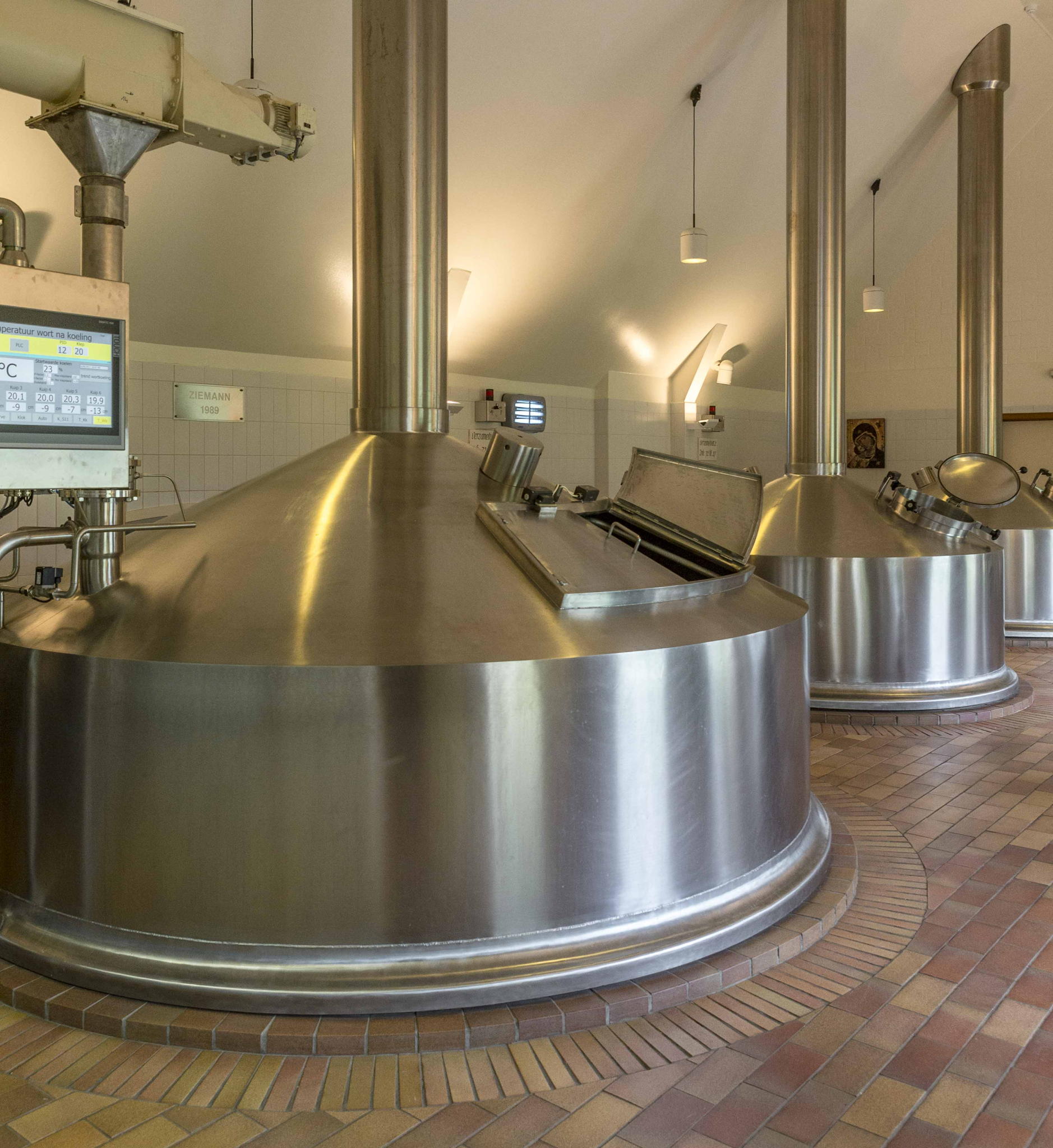The Brewing Process
14 June 2019

The monks of Westvleteren apply the traditional infusion brew method, only using natural ingredients. First, warm water and ground barley malt are mixed. The mash is heated until the present starch is converted to sugars. The sediment forms a layer of filter. The bright filtrate that is obtained is called wort. Next the wort is heated, and hops are added after which the boiled wort is cooled down.
In the early 70s, problems with the quality of the beer occasionally occurred. The staff magazine of the Abbey mentioned the recall of sold beer. The most likely cause of these quality problems was the different kind of infections due to insufficient awareness of the importance of hygienic methods during the brewing process.
Therefore, the monks of the Saint-Sixtus Abbey requested the aid of Brother Thomas, brewer of Westmalle Abbey. He initially informed them that only some minor adjustments were needed. Eventually the cooperation between the monks of Westvleteren and Brother Thomas resulted in a thorough re-engineering of the brewing and fermentation process.
A new brewing method
Until 1976 the Saint-Sixtus Abbey used a coolship and the wort was exposed to the open air and its micro-organisms. In 1976 the coolship was replaced by a closed wort cooler. A fermentation room with six open fermenting tanks, that can be cooled separately, was built. The in-house laboratory allows to monitor accurately the quality of the beers.
The first test brews were produced shortly afterwards. In 1978 the new method was implemented. The monks abandoned for once and for all the sweet-and-sour beer recipe and laid the essential foundation of Trappist Westvleteren’s high quality.
Fermentation, lagering, bottling and secondary fermentation in the bottle
Since the open stainless steel fermenting tanks came into operation, yeast now solely from the Trappist brewery of Westmalle, is added to the wort.
The fermentation itself takes about 7 days. During this period the monks accurately monitor all aspects of the fermentation process (temperature, degree of acidity and fermentation…).
Subsequently the beer undergoes a second fermentation. During this process the remaining sugars ferment. The beer becomes clearer, and the taste refines. The process takes 5 to 12 weeks, depending on the type of beer.
Once the beer is judged on its brightness, degree of carbon dioxide, aroma, and taste, it is bottled. Fresh yeast and sugars are added for the in-bottle fermentation, which results in a natural saturation with carbon dioxide.
This refermentation takes place in a heated warehouse and usually requires 2 weeks. The unfiltered, non-pasteurised beer remains some more time in the warm rooms before it is released for sale.